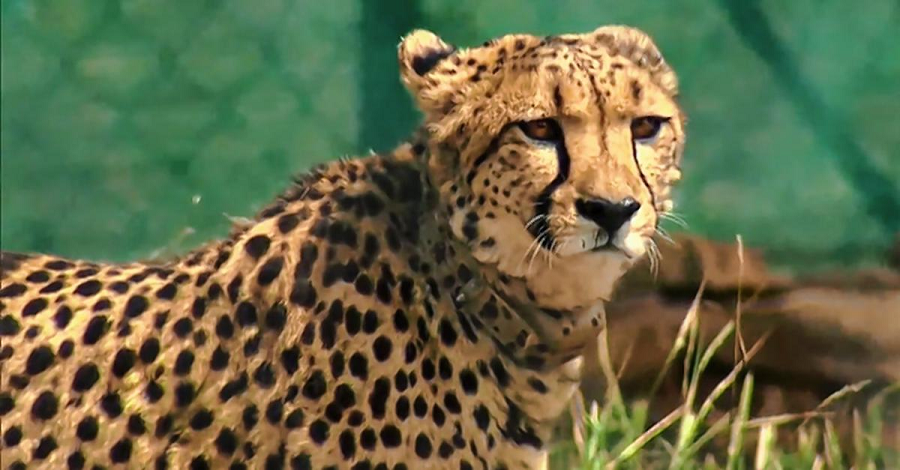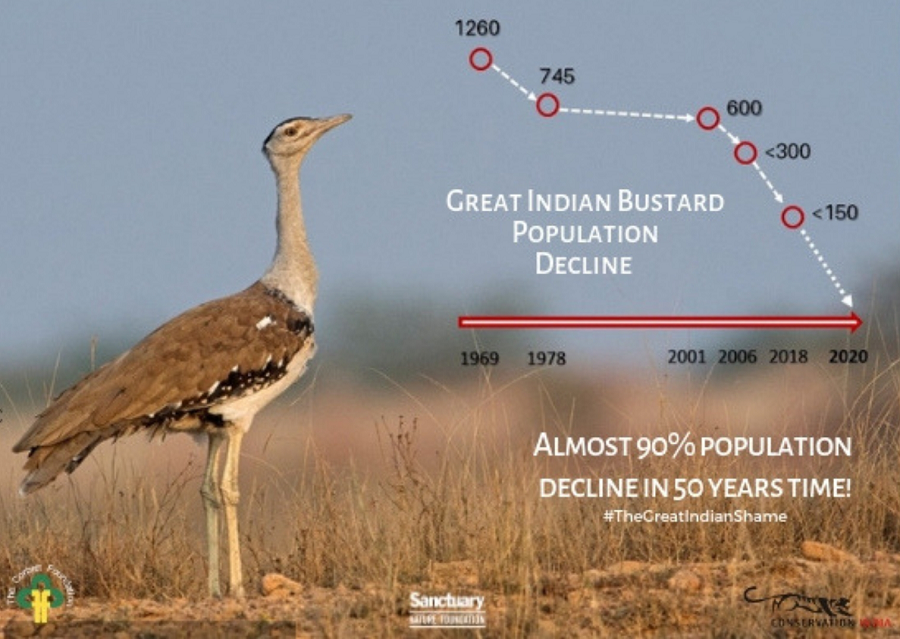Cheetahs and tigers in India (GS Paper 3, Environment)

Context:
- The year 2022 marked the arrival of Namibian cheetahs to India, the first intercontinental transfer of wild cats into the country since independence.
- Eight cheetahs were flown into the Kuno National Park (KNP), Madhya Pradesh, from Namibia on September 17 as part of an ambitious project to eintroduce the big cat into the country.
- In February, the government went public with a plan to import a cohort of animals that could live in India, setting up a task force to implement the programme.
Has the transfer been successful?
- The cheetahs were flown into India following several weeks of medical supervision in Namibia.
- They will be released into the wild gradually so that they have enough time to adapt to Indian conditions, are at reduced risk of contracting and spreading infection and have honed the skills to hunt Indian prey.
- The eight cheetahs were housed in six ‘bomas’ (enclosures) and initially provided with buffalo meat. So far, three of the animals have been released into a larger enclosure outside of the ‘bomas’ after two of them successfully killed chital for prey in November.
- The third animal, Oban, was also released mid-November and all the animals are expected to be moved inside larger enclosures in weeks.
- The cheetahs are radio-collared and their movements will be tracked. Each animal has a dedicated tracking team.
Why is it necessary to have cheetahs outside of Africa?
- Cheetahs were once widespread in India as well as in many parts of the world until they were hunted to extinction. Only around 8,000 of them survived, and overwhelmingly in Namibia and South Africa.
- A different species, called the Asiatic cheetah, once abundant in India, is found in Iran. As part of improving their odds of long-term survival, young animals are being reared as part of conservation efforts in Namibia and then sent to different parts of the world, including India.
- While it is still early days for the cheetah, experts have raised concerns that the KNP has limited space for the cheetah to co-exist with other predators such as tigers and lions, for which the KNP was originally prepared.
What is the tiger population in India?
- Every four years, India carries out a census of the tiger population across India. The latest estimate put the tiger population at 2,967.
- Tigers were reportedly increasing at a rate of about 6% per annum and the area that they occupied was roughly stable, at about 89,000 square km since 2014.
- In 2006, India had 1,411 tigers. This rose to 1,706 in 2010 and 2,226 in 2014 on the back of improved conservation measures and new estimation methods.
How did the numbers increase?
- The consistent implementation of Project Tiger since 1973, whereby dedicated tiger reserves were established in India, as well as anti-poaching measures have played a significant role in tiger conservation.
- India has 53 tiger reserves with the latest being added early in 2022. However, rising tiger numbers have meant that nearly half the tigers are now outside designated protected zones that lead to increasing instances of human-animal conflict.
Protecting the Great Indian Bustard
(GS Paper 3, Environment)
Why in news?
- Recently, the Supreme Court asked the Government, whether a focussed approach, something like Project Tiger, can be taken up for saving the critically endangered Great Indian Bustard (GIB).

What is endangering the birds?
- Hearing petitions highlighting deaths of the GIBs due to power transmission lines, a special bench of the apex court led by Chief Justice D.Y. Chandrachud directed Chief Secretaries of Gujarat and Rajasthan to undertake and complete a comprehensive exercise within four weeks to find out the total length of transmission lines in question and the number of bird diverters required.
- This is not the first time that the Supreme Court had intervened in the conservation of the GIB.
- In an earlier order in April 2021, the Supreme Court had directed the authorities to convert the overhead cables into underground power lines, (where feasible) within a period of one year and that till such time diverters would have to be hung from existing power lines.
Why do power lines pose a threat?
- There are several threats that have led to the decline of the GIB populations; however, power lines seem to be the most significant.
- There have been studies in different parts of the world where bustard populations have shown high mortality because of power lines such as Denham’s bustards in South Africa and the Great Bustard in Spain.
- Like other species of bustards, the GIBs are large birds standing about one metre tall and weighing about 15 to 18 kgs.
- The GIBs are not great fliers and have wide sideways vision to maximise predator detection but the species’ frontal vision is narrow.
- These birds cannot detect power lines from far and since they are heavy fliers, they fail to manoeuvre across power lines within close distances.
- The combination of these traits makes them vulnerable to collision with power lines. In most cases, death is due to collision rather than electrocution.
- A study by the Wildlife Institute of India (WII) in 2020 recorded six cases of GIB mortality due to power-line collisions in Thar from 2017-20.
What steps have been taken?
- Listed in Schedule I of the Indian Wildlife (Protection) Act, 1972, in Appendix I of CITES, as Critically Endangered on the IUCN Red List, the GIBs enjoy the highest protection both in India and globally. The earliest estimates show the population was about 1,260 in 1969, but has declined by 75% in the last 30 years.
- Historically, the GIB population was distributed among 11 States in western India but today the population is confined mostly to Rajasthan and Gujarat. Small populations are found in Maharashtra, Karnataka and Andhra Pradesh.
- The overall population of the GIB totals 150 across the country, which includes about 128 birds in Rajasthan.
- Along with the attempts to mitigate impacts of power transmission lines on the GIB, steps have been taken for conservation breeding of the species.
Ex-situ conservation:
- A total of 16 GIB chicks, artificially hatched from eggs collected from the wild, are being reared in the satellite conservation breeding facility at Sam in Jaisalmer, Rajasthan.
- The objective of ‘Habitat Improvement and Conservation Breeding of Great Indian Bustard-an integrated approach’ is to build the captive population of the GIBs and to release the chicks in the wild. The initiative is likely to take 20 to 25 years.
- Experts, including scientists from the WII, have called for removing all overhead powerlines passing through the GIB priority/critical areas in Rajasthan; the Ministry of Environment, Forest and Climate Change too has constituted a task force. Questions, however, are being raised on the slow pace of implementation.
Are there other threats to the GIB?
- The GIBs are slow breeders and they build their nests on the ground. The species have also been subjected to hunting and egg collection in the past. There also has been a decline in prevailing habitat loss as dry grasslands have been diverted for other use.
- Experts also warn of pesticide contamination and increase of populations of free-ranging dogs and pigs along with native predators, putting pressure on nests and chicks.
Conclusion:
- While most of the population of the species is confined to the Jaisalmer Desert National Park (DNP), wildlife enthusiasts believe that more areas outside the protected area must be made suitable for the species.
- A conservation effort like ‘Project Tiger’ may not work for a large bird of an arid region that can always fly out of the protected area. Experts are calling for community-centric conservation of the species.
Increasing the shelf life of stored blood
(GS Paper 3, Science and Tech)
Why in news?
- Recently, the Institute for Stem Cell Science and Regenerative Medicine (DBT-inStem) has developed a novel blood bag technology to enhance the quality and shelf life of stored blood.

Why it matters?
- Despite inadequate blood donation, millions of blood units are discarded due to decline in quality during storage. Stored blood has a finite shelf life.
- Typically, stored cells produce various extracellular components known as damage-associated molecular patterns (DAMPs), which damage the blood cells during storage.
Previous attempts:
- Although multiple attempts have been made to increase the quality of stored blood, they have limited success. Thus far, studies have focused on improving storage conditions through additives, rejuvenation solutions, and cryopreservation protocols.
- However, none of those approaches addressed the cause of the problem, the presence of damage causing extracellular components in the blood.
New approach:
- To tackle this issue, contrary to the conventional approaches, they have developed a novel approach to scavenge/capture and remove the damage-causing extracellular components during blood storage.
- This prevented the damage of stored blood cells, and enhanced their quality, and increased the shelf life of stored blood by about 25%.
- Typical extracellular components being generated are free-iron and free-hemoglobin, bioactive lipids such as poly unsaturated fatty acids, extracellular DNA, nucleosomes, and proteins. During the storage, these components interact and damage red blood cells (RBCs).
- Capturing these DAMPs components without causing damage to the stored blood cells is highly challenging. Therefore, they have custom-designed nanofibrous sheets that can capture such damage-causing components and protect RBCs.
Nanofibrous sheets:
- Critical damage-causing agents are charged molecules. they hypothesised and demonstrated that charged nanofibrous sheets made with cationic and anionic polymers will help scavenge damage-causing agents through ionic interactions. These nanofibrous sheets can be made into blood bags.
- DAMPs are produced when cells get destroyed and the DAMP components, in turn, damage the membrane of RBCs and reduce the membrane integrity, which makes the RBCs fragile. Upon transfusion, the fragile RBCs break down, leading to poor blood transfusion outcomes.
Outcome:
- Intermittent capturing of DAMPs on day 21 or 28 after collection using the novel blood bags helped protect RBCs from losing their membrane integrity, and enhanced the transfusion efficiency. Scavenging of DAMPs can be completed in 15 minutes.
- Typically, blood can be stored for 42 days before transfusion. Compared to fresh blood, blood loses its quality upon storage, and overall blood transfusion efficiency reduces.
- 42 days of stored old blood has the least transfusion efficiency than either fresh blood or 21 days of stored blood.
Way Forward:
- With new technology, the quality of 42 days of stored old blood is as good as freshly collected blood. Additionally, the maximum shelf life of stored blood has increased by 25%.
- Besides increasing the shelf life of stored blood, it may be a boon for preserving rare blood groups.




